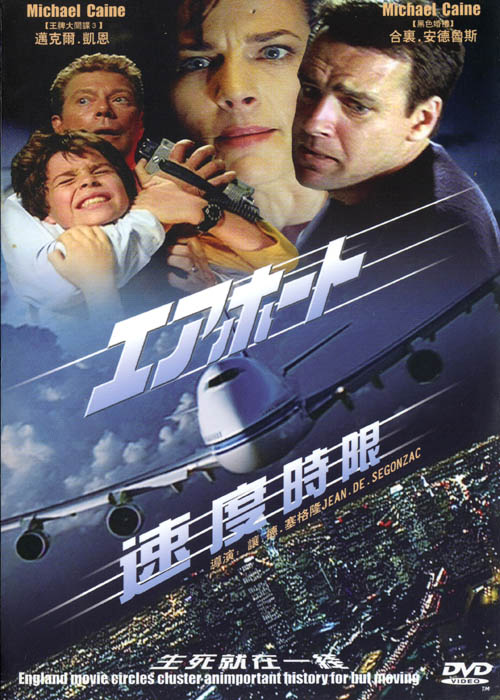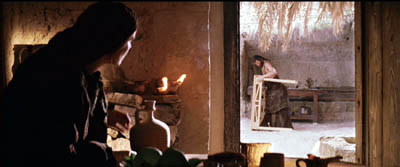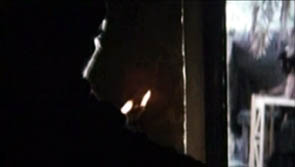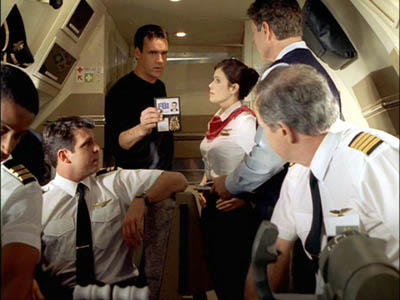Our first anniversary, with a note on the unexpected fruits of film piracy
Thursday | September 27, 2007 open printable version
open printable version

DB here:
This blog started on 26 September 2006. During its first year, it has attracted over 400,000 pageloads, over a quarter of a million visitors, and over 50,000 returning visitors. We currently average about 1000 visitors a day. While this is small potatoes by the standards of mammoth websites, it’s far more than we expected when we started. We’re grateful to all those readers who sought us out or stumbled upon us, who Googled and Yahoo’d us, who linked and listed us, who sent us corrections and extra information. And we’re grateful to our web tsarina Meg Hamel who set this up and keeps things running smoothly.
In the last twelve months, we’ve posted about 200,000 words, or enough for two books. We’ve tried to make most entries as attentive to ideas and information as what we’d write for a print publication—if not a scholarly book, at least a mainstream article. Kristin and I think of our blog as a sort of column, published in a magazine we edit, with no length restrictions, no assigned topics, and as many pictures as we like. It’s been fun to write more informally than we usually do. We’ve also been able to call attention to regional and national cinemas (e.g., Hong Kong, Denmark, New Zealand) we think deserve more attention. We can also pursue topics that we couldn’t fit into larger research projects, like Kristin’s interest in the Lord of the Rings franchise and my curiosity about alien autopsies.
While the blog originally aimed to supplement Film Art: An Introduction, we think that the best way to do that is to keep reminding our readers that the world of film is dazzling in its diversity and unpredictability. One commentator said that our blog was aimed at students and nonspecialists, but we find that many professional film scholars and film journalists check on us. Perhaps that’s because we wander where we like, from very old films to recent films we see at multiplexes and festivals, and we propose ideas that could be considered more closely and researched more exactingly. One correspondent said that many of our entries could be the basis for research articles. Maybe, but we have more ideas than we can ever write up systematically, so off to the blog they have gone. In addition, we’ve sometimes used the blog to extend or supplement things we’ve published in books and articles.
Looking back at what we’ve done, I notice some recurrent themes.
*In keeping with the blog’s title, we emphasize film as an art form. More specifically, we’re especially interested in how structure and technique work together, which few blogs outside the industry do. For instance, most online critics have concentrated on praising or condemining The Brave One, and in rather general terms. If we wrote about it, we’d probably focus on the effects of its alternating points of view, its use of the four-part script structure, and its recourse to oddly rocking camera movements to convey Erica’s disorientation at crucial moments (and trace how those develop in patterned ways across the film). That is, we’d incline toward somewhat finer-grained analysis of cinematic storytelling, even if that means going shot by shot. If we want as well to make an evaluation of the film, as we sometimes do, we then have some concrete evidence to back it up.
*We also treat film art as tied to film commerce—both the mainstream industry and the less-acknowledged form of commerce known as film festivals. We’ve always believed that there isn’t necessarily a battle between film as an art form and “the business.” Much of our published work, including Kristin’s Exporting Entertainment and my work on Hong Kong film and contemporary Hollywood, as well as our collaboration with Janet Staiger on The Classical Hollywood Cinema, tries to trace out ways in which funding affects the look and feel of the finished work. Money matters!
*We’re happy to find that a lot of filmmakers read and link us. One of the purposes of Film Art was to show how artistic expression in cinema is tied to practical decisions made by filmmakers; that’s why we begin the book with an overview of the process of film production. In our academic work as well, we’ve been more inclined than most scholars to interview filmmakers, to read technical journals, and to study how craft practices create artistic effects. We’ve developed friendly relations with Asian filmmakers like Johnnie To and American filmmakers like Mark Johnson and James Mangold. We’ll continue to discuss how technique, technology, and filmmaking traditions interact in cinematic expression.
*We’ve tried to deflate some clichés of mainstream film journalism. Writers of feature articles are pressed to hit deadlines and fill column inches, so they sometimes reiterate ideas that don’t rest on much evidence. Again and again we hear that sequels are crowding out quality films, action movies are terrible, people are no longer going to the movies, the industry is falling on hard times, audiences want escape, New Media are killing traditional media, indie films are worthwhile because they’re edgy, some day all movies will be available on the Internet, and so on. Too many writers fall back on received wisdom. If the coverage of film in the popular press is ever to be as solid as, say, science journalism or even the best arts journalism, writers have to be pushed to think more originally and skeptically.
*There’s the theme we might call the continuing presence of the past. I notice that many of our entries comment on a current event or topic by showing that it has parallels and precedents in earlier periods of film history. This isn’t, I hope, showoffishness or academic point-scoring or a bored conservatism. Often this historical awareness allows us to correct hype and nuance ideas. Yes, today’s cinema experiments with flashbacks and intersecting story lines; but these are formal strategies we find in earlier periods of filmmaking too. So the interesting questions become: How are today’s strategies different? Why do these traditions get reinvented now? What consequences do they yield in our current circumstances? Rather than celebrating apparent innovation, it’s more exciting to see how filmmakers connect to tradition, shaping it in ways that even they might not be aware of doing. We tend to see the present through a narrow window, but historical awareness widens and deepens the view.
We rethink our project from time to time. Regular readers will notice that we’ve just added a roll of Readers’ Favorite Entries, on the right. We’ve also talked about adding a podcast to the site. In any event, we look forward to another year of our little magazine, and we have a folder full of ideas that we hope will tantalize you.
I’m off to Vancouver to cover the festival, as I did a year ago. More information on its wonderful lineup is here. In the meantime, some dessert.
Piracy ahoy
In Shanghai a few years ago I visited a shop selling pirated DVDs. Two illegal titles caught my eye.
According to the Motion Picture Association of America, the trade association of the major Hollywood companies, all pirated editions have their origin in camcorder copies made during screenings. In other words, it’s those outlaw consumers ripping us off.
But a large part of piracy can be traced to people working inside the industry. A common source is the raft of DVD screeners sent out to Academy members during awards season. It has proven impossible to keep these discs from getting into the hands of pirates. Other bootleg copies come from inside the production and distribution companies. Famously, a copy of Bulletproof Monk surfaced in China before the final cut was made; it’s widely believed that an employee leaked it. With so many special-effects houses working on a film in postproduction, it’s not difficult for one keyboard jockey to upload a working copy to the Darknet. Hence all those time-coded versions of the Star Wars saga that made their way into eager fans’ hard drives.
Further evidence of this tendency comes from the first Shanghai DVD I examined, that of The Passion of the Christ, not then available legally anywhere. It was a curious copy. It was an auditorium version, as pirates call movies snagged during a screening. The color and resolution were poor, and the camera zoomed in during the credits to a 1.75 ratio, wrecking the anamorphic compositions and creating closer framings.


Poor as it was, the bootlegged disc lacked some of the usual problems. The image was stable and centered, with no sign of being filmed from a seat in the house. The sound wasn’t tinny or boomy, as it would be if it came from theatre speakers, but it was plagued with whistles and dropouts.
I concluded that this was a version made by a projectionist in off-hours. He or she had time to set up the camera on a tripod near the back of the house and record the whole film without distraction, using an iffy sound feed. But what was more puzzling was the fact that the print being screened had no subtitles.
So what I was seeing was an early version, before any subtitles had been put on. The projectionist wasn’t your local multiplex employee but someone in the postproduction process. In a way, however, this bootleg copy fulfills Mel’s dream. As the film began shooting Mel claimed:
Obviously, nobody wants to touch something filmed in two dead languages. They think I’m crazy, and maybe I am. But maybe I’m a genius. I want to show the film without subtitles. Hopefully, I’ll be able to transcend language barriers with visual storytelling. If I fail, I’ll put subtitles on it, though I don’t want to.
On the bootleg DVD you could add Chinese titles or barely comprehensible English ones. Of course once the official DVD version came out, you could turn all subs off, but for a moment the bootleg market had given us Mel’s vision pure.
The second DVD that caught my eye points up another unexpected consequence of piracy. The cover of the release is at the very top of today’s entry. What made me investigate was the fact that Michael Caine is listed as being in the movie twice (though with different Chinese characters giving “his” name). Even the eager young researcher of PCU, immersed in the oeuvres of Gene Hackman and Michael Caine, might want to add a paragraph about this movie.
The credits on the back of the package add to the confusion. They are for Disney’s The Kid, and the running time is listed at 2:49. (The Kid is only 104 min.) I later learned that The Kid is a default paste-in on many DVD backsides. Why reproduce several different credit lists when all that matters is the metamessage, “This is an American movie”? But if it’s a Disney film, why does the printing also provide the Universal logo and an R rating?
So I broke down and watched the movie. (Flawless copy, by the way.) It is Code 11-14, a 2001 TV movie by Jean de Segonzac (big clue on the cover). An LA cop is tracking a serial killer. The killer follows the cop and his family onto a passenger jet and terrorizes them. According to Hal Erickson’s All Movie Guide, CBS pulled it from the schedule in the wake of 9/11. It wasn’t broadcast until 2003. Code 11-14 stars David James Elliott, Nanci Chambers et al., but not Michael Caine.
These sorts of mind games are pleasant. It’s fun to be thrown off balance by guessing how the credits got scrambled (PhotoShop set to Random?) and why Mr. Caine is credited doubly. Is he twice as popular in China as any other actor?
But the strongest justification for the existence of this pirate copy seems to me the liner notes.
What you see on the cover above—England movie circles cluster animportant history for but moving—is but a foretaste of what you find on the back. I reproduce it word for word.
This large war movie, empty cluster in the movie circles elite of England but move, for re-appear their motherland atAn important history of the period of World War II but worker harder, the film to record theatrical breeze The space describes the German Nazi in 1910 got empty bomb British intensive metropolis, make England Lose miserably heavy, but also arose England people together enemy spirit to make Germany, in numerous Popular actor inside, exceed the gram. The boon of . The willing to thinks, the shares the drama more, play the cuckoldry of The jade of Susan then expresses romantic, in addition, the Lawrence the brilliant jazz in military tactics with, the plays the plays the heartless condition in hungry clap very sublime and lifelike.
Exactly. I rest my case.

PS 30 Sept: I should’ve realized there’d be a website devoted to maniacal pirate prose and pictures. Thanks to Stuart Ian Burns, I learn that you can find many more at a Flickr group called, logically, crappy DVD bootleg covers.













